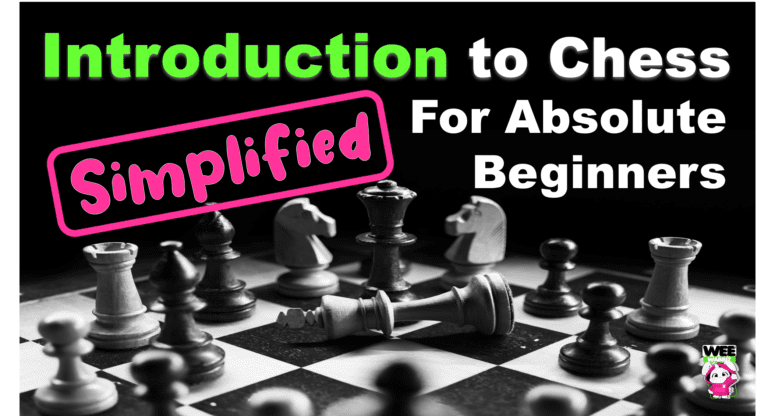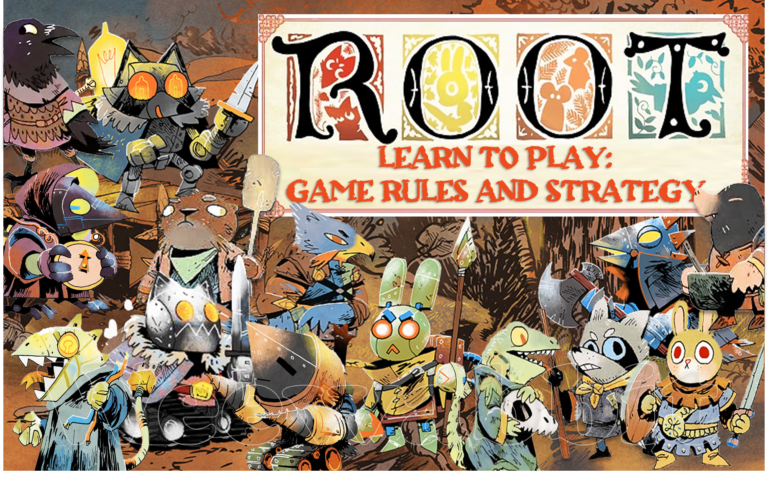Have you ever dreamed of stepping into a horror movie? Imagine a setting where the creak of every floorboard could be a prelude to terror, where each room you enter holds untold stories, and your fate is determined by the turn of a card or the roll of a dice. Welcome to “Betrayal at House on the Hill,” a board game that turns this spine-tingling fantasy into a thrilling reality.
For those unacquainted, “Betrayal at House on the Hill” is not just a board game—it’s a journey into a haunted house with a personality as unpredictable as the story it crafts. Each game begins with a group of players, or should we say brave souls, embarking on an exploration of a house filled with dreadful surprises and secrets. As tiles are drawn at random, a unique mansion is built from the ground up, ensuring that no two games are ever the same.
But what starts as a cooperative exploration soon spirals into a desperate survival as one of the players betrays the rest, turning the game into a showdown between the traitor and the survivors. From ghostly apparitions and devious traps to occult rituals and beyond, the house unveils different scenarios each time, each with its own narrative and objectives.
Over the years, “Betrayal at House on the Hill” has haunted the imaginations of players through its first, second, and third editions—each adding new layers of mystery and fear, new rooms to discover, and new scenarios to endure. This board game, a clever amalgamation of strategy, chance, and storytelling, has gained a cult following and become a staple for any game night seeking a dash of horror.
Over the years, “Betrayal at House on the Hill” has haunted the imaginations of players through its first, second, and third editions—each adding new layers of mystery and fear, new rooms to discover, and new scenarios to endure. So, grab your flashlight and steady your nerves and let us start with the first edition.
Let the hunt begin!
First Edition – Where It All Began

What Made the Original Game a Cult Classic?
The first edition of “Betrayal at House on the Hill” set a new precedent in board gaming with its innovative design and compelling storytelling. Bruce Glassco’s brainchild hit the shelves in 2004 and immediately captivated players with its blend of classic horror tropes and an ever-changing game environment.
The Thrill of Exploration

In the original game, players begin their journey at the entrance hall, a starting point that promises both safety and the unnerving unknown. With every room tile they draw, they piece together a haunted mansion that never looks the same twice. This exploration phase is a cornerstone of the game, where anticipation builds with every new door that opens.
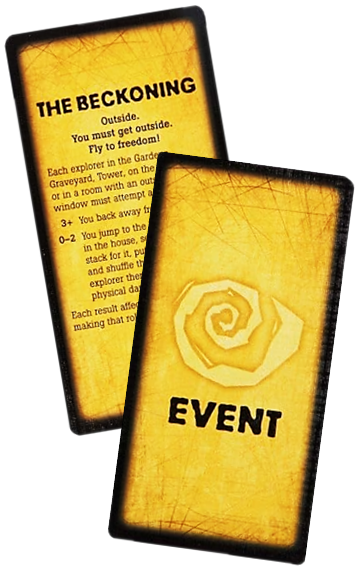
Crafting Your Horror Story
The game weaves in elements of creative writing, where players’ choices and the random events they encounter contribute to a unique narrative. Like a horror movie director, the game sets the scene, but it’s the players who create the story, making each playthrough as unpredictable as a roll of the dice.
What’s Behind the Haunt Roll?

As the players explore the house, they come across various omen cards—a portent of bad things to come. The haunt roll, a pivotal mechanic introduced early in the game, keeps everyone on edge. After drawing an omen card, players must roll the dice and beat a growing difficulty to prevent the haunt from starting. Once the haunt begins, one player is revealed as the traitor, turning friends into foes and kicking off the second, adrenaline-fueled half of the game.
How Do You Start Your Haunted House Adventure?
Setting up “Betrayal at House on the Hill” for the first time is like unfolding a map to a treasure trove of horror delights. Selecting from a cast of characters, each with their own strengths and weaknesses, players take character cards that serve as their avatars in this grim adventure.

Character Cards
These cards are not just identifiers; they represent each player’s lifeline—their mental and physical traits. As they navigate the ground floor, upper floor, and basement of the house, these traits will be tested by the numerous challenges the house throws their way.
When Does Your Haunt Begin, and What Does It Mean?
The haunt is when “Betrayal at House on the Hill” transforms from a collaborative game of exploration into a tense and thrilling showdown. The haunt scenario activates when the haunt roll fails, unveiling one of fifty possible stories—each with its own rules and objectives for both the traitor and the heroes.
The Haunt Scenario: A Game-Changer
This is where “Betrayal” truly shines. The haunt scenario plunges the house into chaos, and players must quickly adapt to their new roles. The traitor might control serial killers, ghosts, or even eldritch monsters, while the survivors scramble to uncover the means to victory, which could be as complex as solving puzzles or as dire as a last stand against evil.
Heroes and Horrors: Who Survives in Betrayal?
Survival in “Betrayal” often boils down to how well players manage their characters’ physical and mental stamina. Physical damage can lead to characters limping through the haunted halls or struggling to fight back against the traitor’s machinations.
Good Guys vs. Bad Things
The heroes of the game, often known as the “good guys,” are not just battling the traitor but also the house itself. The game’s original version set a strong foundation for a ‘hidden traitor’ mechanic that becomes central in later editions. The suspense of not knowing when the betrayal will occur—or who it will be—adds a delicious layer of tension that has kept players coming back for more.
Why Do Fans Still Revere the First Edition?
Despite its age, the first edition of “Betrayal at House on the Hill” remains beloved. Its innovative mechanics, the sheer number of haunts, and the thrill of constructing a horror movie from scratch ensure its enduring legacy.
A Foundation of Fear
This original version has laid the groundwork for not only its own expansions and sequels but also for a whole genre of board games that followed. Its cult status is a testament to the game’s immersive gameplay, dynamic storytelling, and the unpredictable, thrilling experiences it generates—perfect for a game night that you won’t forget.
1st Edition Brief “How to play” Guide
The first edition of ‘Betrayal at House on the Hill’ introduced us to the haunted mansion filled with dread and unknown terrors. Its blend of cooperative gameplay, with a sudden twist of betrayal, captivated players around the world.
How to Play: First Edition Brief Guide
- Setup Essentials: Place the entrance hall tile and organize the room stacks. Each player selects a character, placing the corresponding miniature and character card before them.
- Exploring the House: Players take turns moving through the house, flipping new room tiles and placing them as they go. Some rooms trigger event, item, or omen cards.
- The Haunt Begins: When an omen card is drawn, the player makes a haunt roll. If the roll is less than the number of omen cards revealed, the haunt scenario is triggered.
- Surviving the Horror: Depending on the haunt, one player becomes the traitor, and the rest become heroes. Each side has specific win conditions detailed in the haunt’s rules.
Download Betrayal at the House on the Hill RULEBOOK
Second Edition – The Haunts Evolves
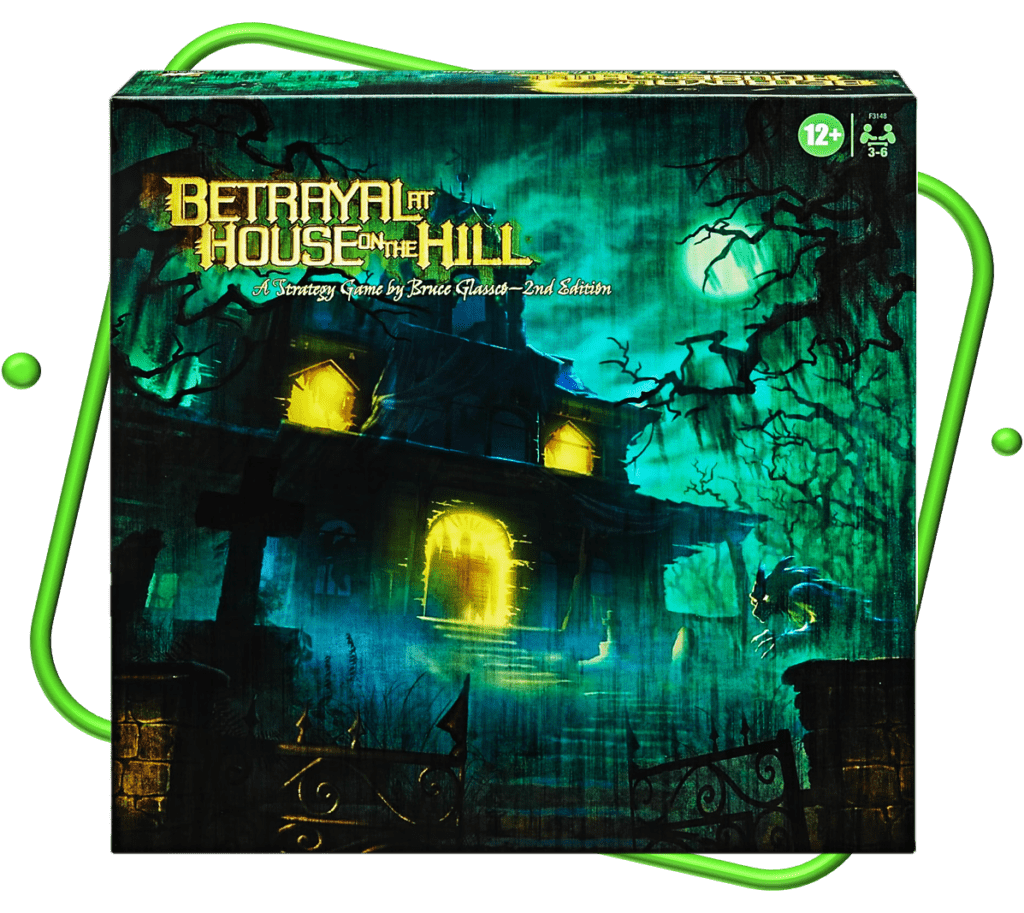
What’s New and Improved in the Second Edition?
With the second edition, released in 2010 by Wizards of the Coast, came polished rules, clarified text, and updated components. The rule books received a much-needed overhaul for better clarity, making the game more accessible to new players while keeping the core experience that fans loved intact.
Enhanced Components and Sleeker Design
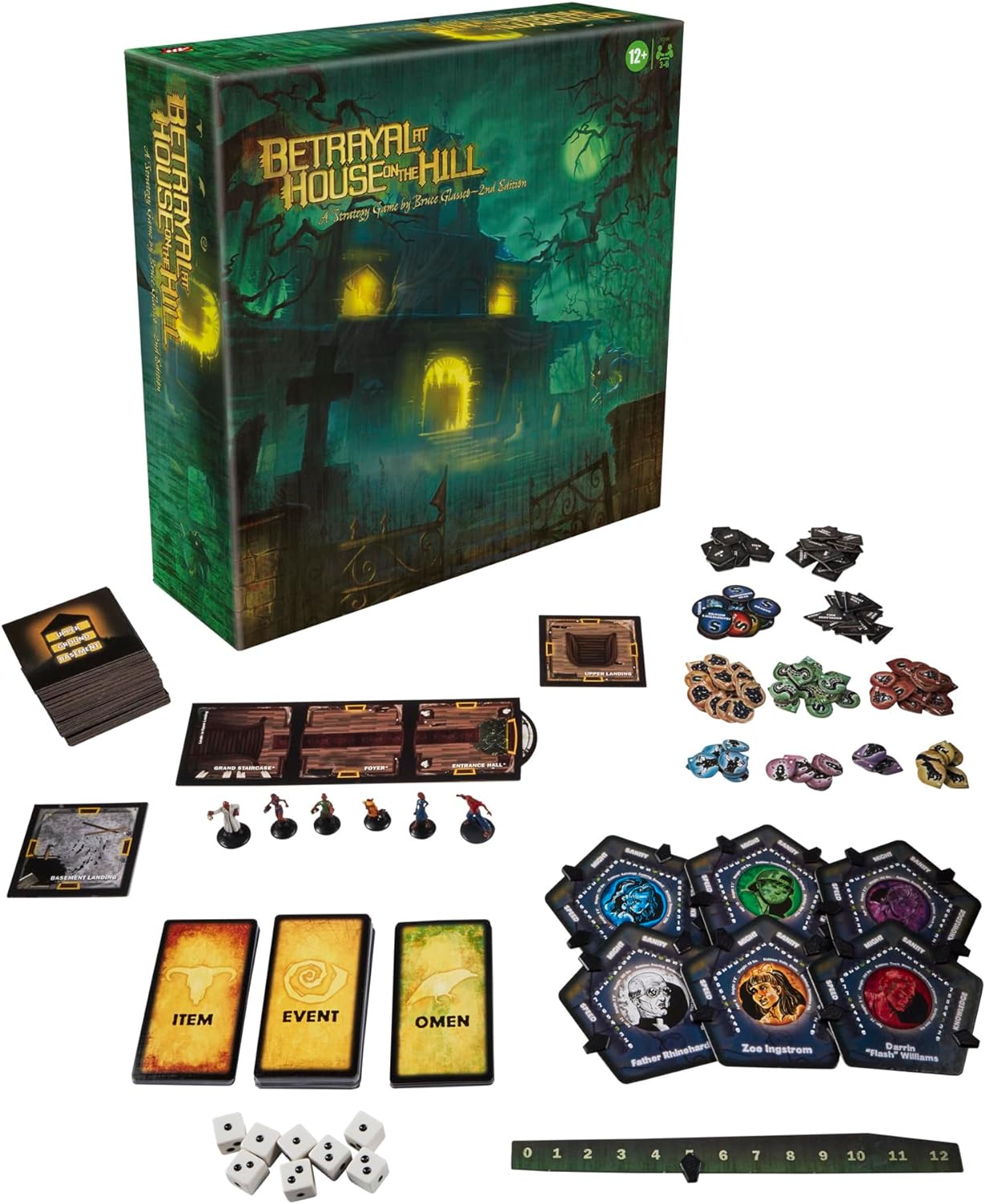
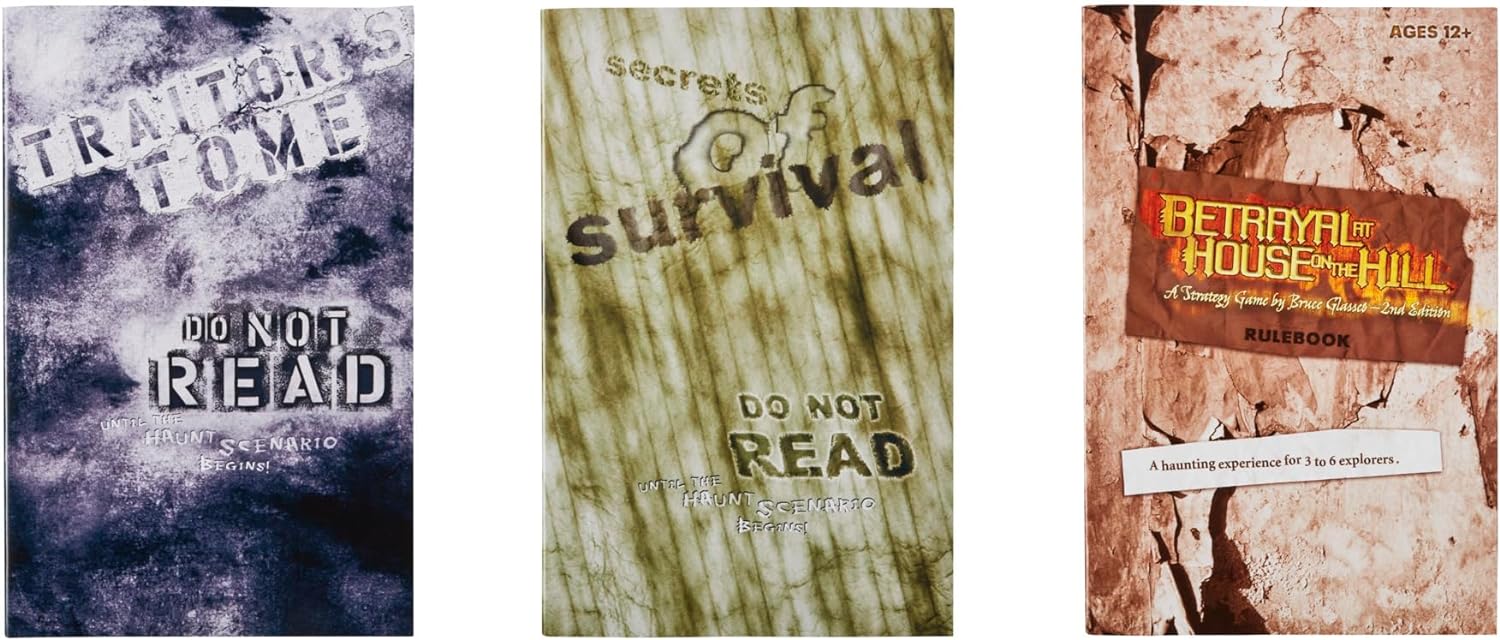
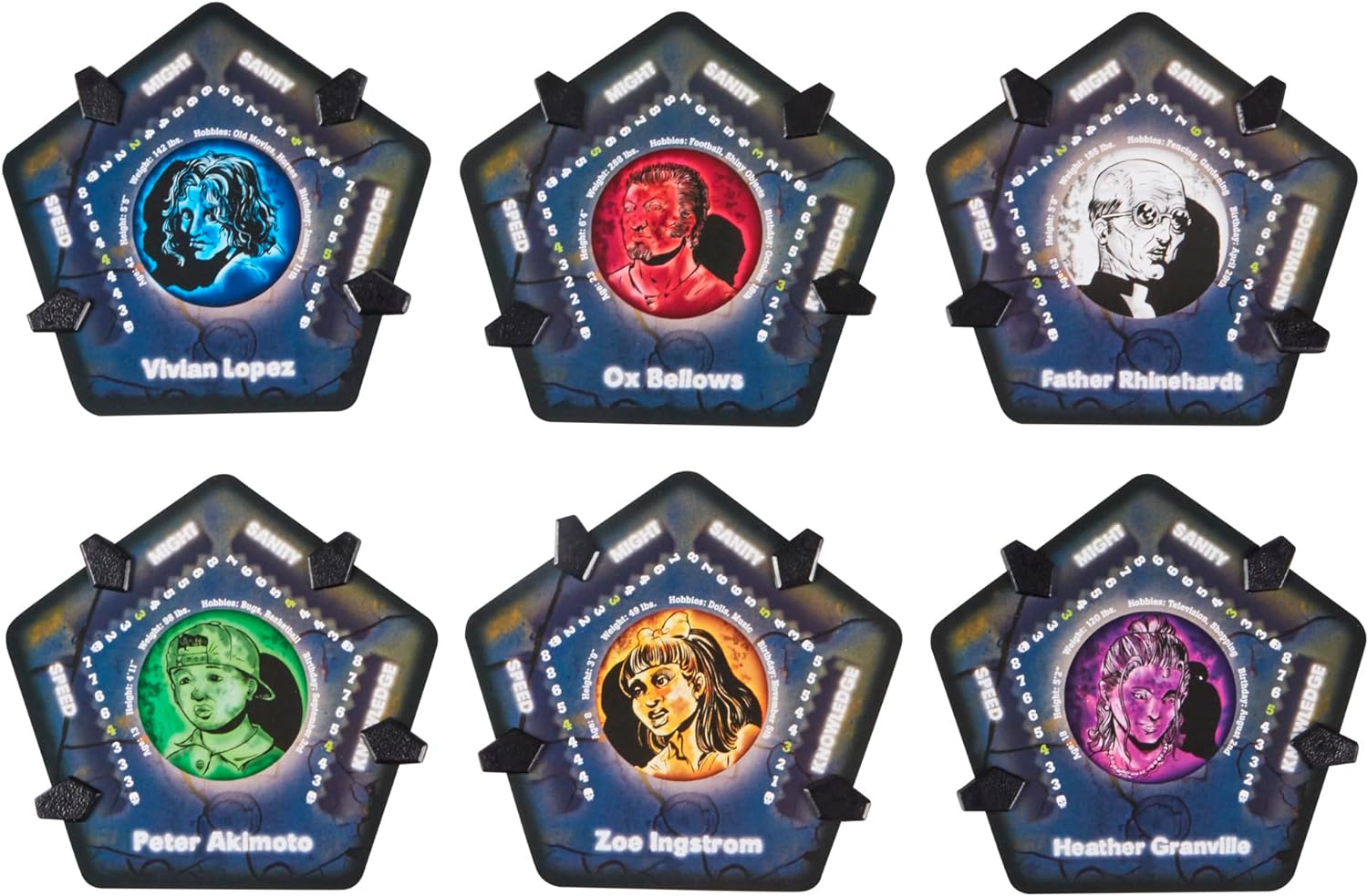
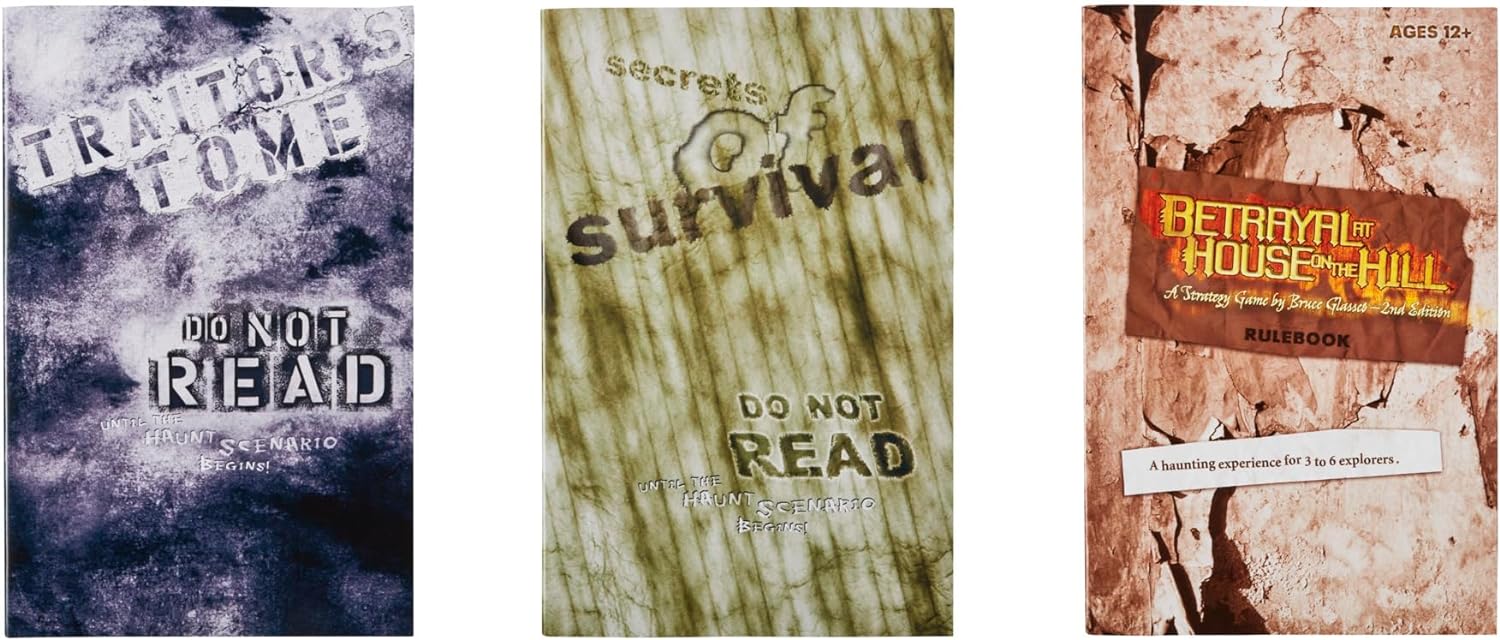
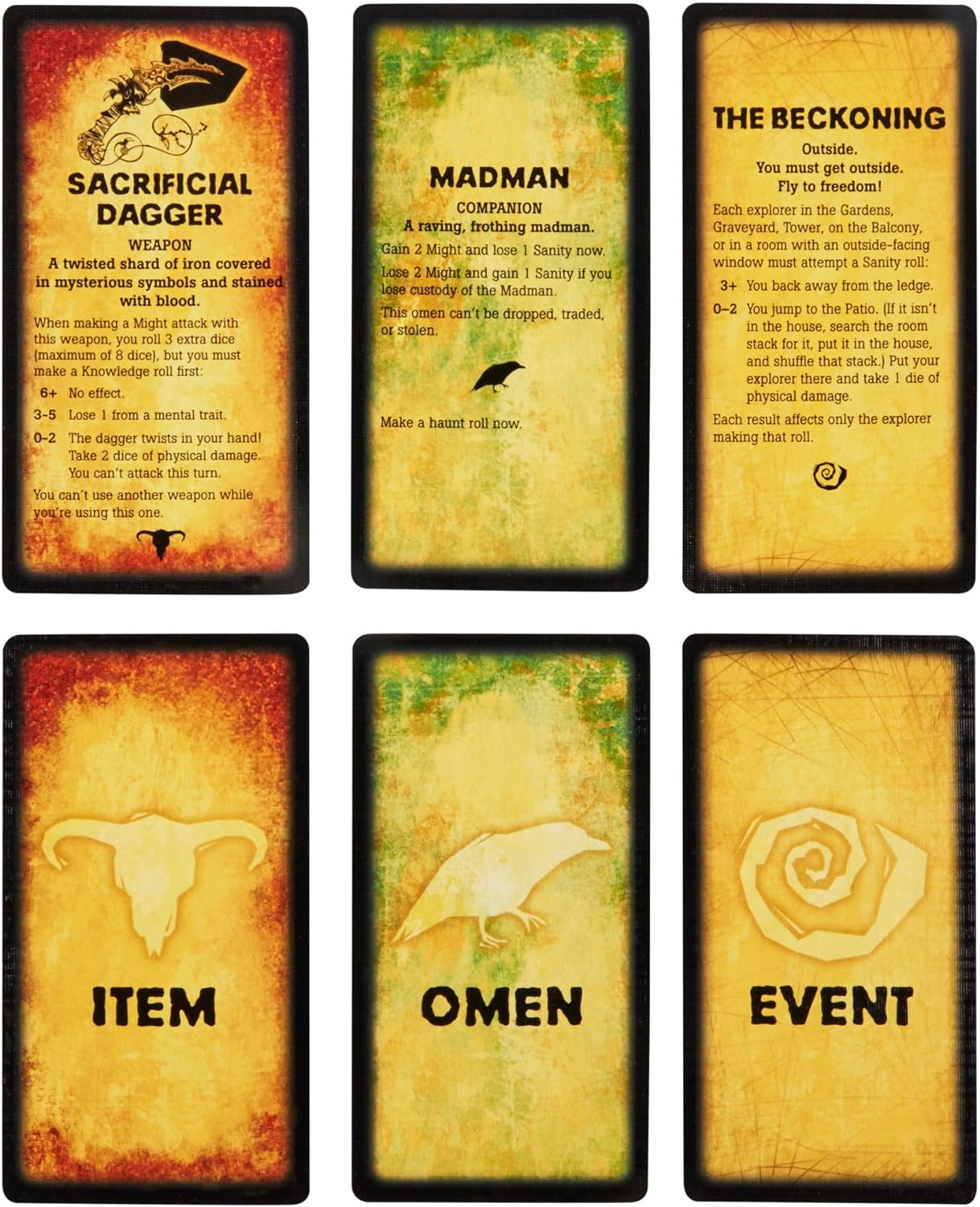
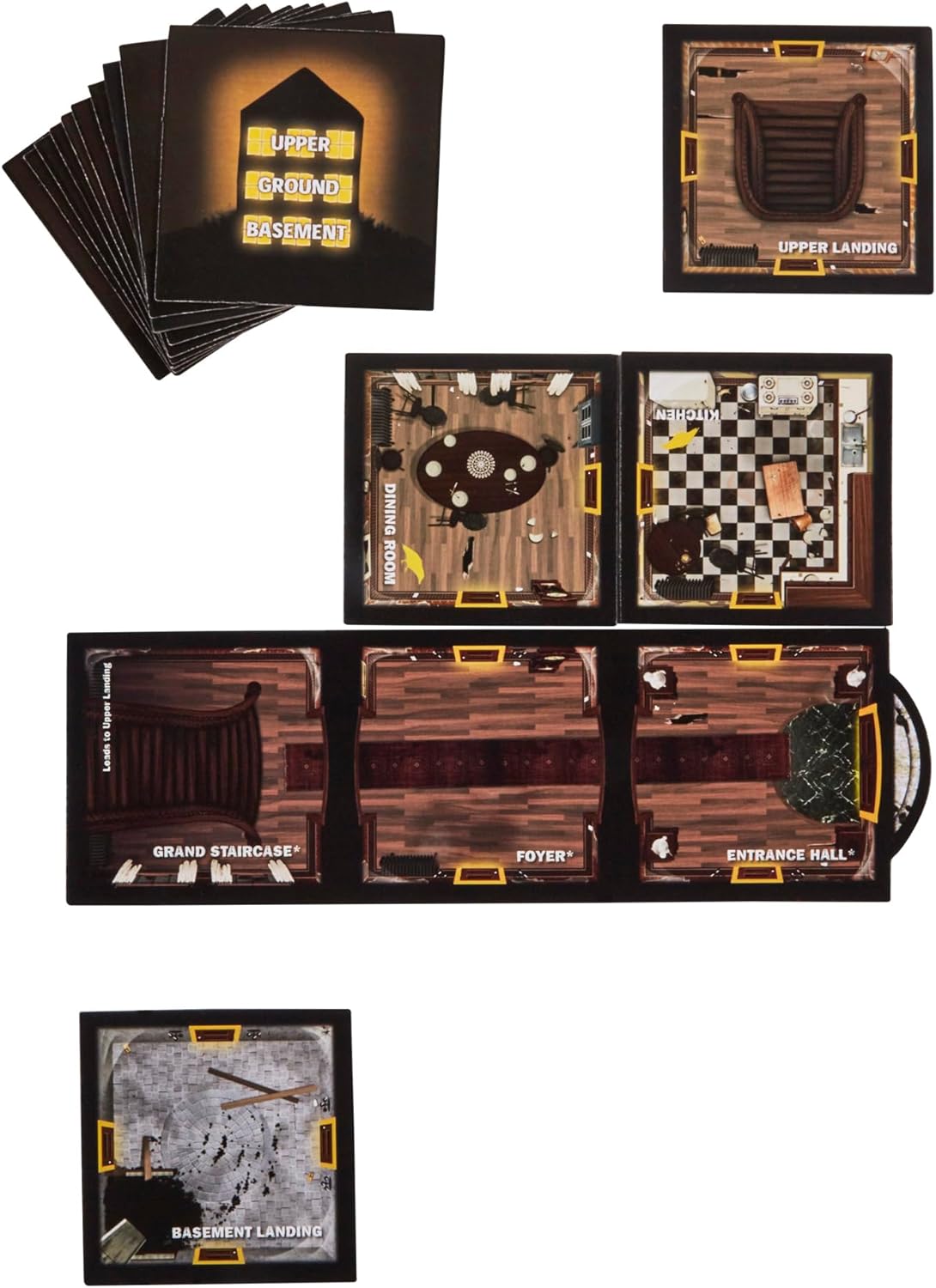

Physical components like the character boards saw a design refresh. New players found it easier to dive into the haunted mansion’s depths with the more readable cards and rule books, without the ambiguities that sometimes haunted the first edition.
How Has Gameplay Evolved in the Second Edition?
Beyond cosmetic updates, the second edition introduced crucial gameplay refinements. The scenarios were tweaked for better balance, and new haunts were included, enriching the game’s already vast narrative potential.
Rebalanced for Better Haunts
With new scenarios at their disposal, players experienced a wider variety of tales, each more refined than the last. The haunts themselves underwent meticulous rebalancing, offering a more consistent and fair experience that made each game player’s descent into madness or fight for survival as engaging as possible.
How Do Characters Grow and Change?
Character development was deepened in the second edition, providing more room for growth and varied strategies. The second edition allowed for greater exploration of each character’s story, which could be reflected in how they tackled the various events and challenges of the game.

Trait Rolls and Stat Boosts
The updated character cards featured clearer paths for trait rolls and potential stat boosts. These adjustments gave players more opportunities to specialize their characters in either the physical traits necessary to survive encounters or the mental acuity to solve the house’s riddles.
What Are the Secrets of the Expanded Mansion?
The second edition brought fans new rooms, more items, and fresh events. This expansion meant the house could grow in unexpected directions, creating dead ends, long corridors, and grand staircases that led to mysteries above or below.

Widow’s Walk Expansion: A New Dimension
The Widow’s Walk expansion, introduced later, added an entirely new floor to explore, along with fifty new haunts. This expansion not only increased the mansion’s size but also its narrative depth, giving repeat explorers new stories to unfold and new horrors to confront.
2nd Edition Brief “How to play” Guide
Building on the first edition, the second edition of ‘Betrayal’ smoothed out the gameplay with clearer rules, added new scenarios, and offered more dynamic room tiles.
How to Play: Second Edition Brief Guide
- Initial Preparations: Start with the updated rulebook, ensuring all players understand the new components like updated room tiles and event cards.
- Discovering New Rooms: As players build the house, new room tiles can change gameplay with more interactive features and choices.
- Haunt Roll Adjustments: The haunt roll now includes new triggers and scenarios, providing a fresher challenge and enhanced storytelling.
- Facing the Traitor: New haunts and updated rules for the traitor and heroes make the second half of the game even more engaging.
Download Betrayal At The House On The Hill 2nd Edition RULEBOOK
Download Widow Walk RULEBOOK
Third Edition – The Latest Turn in the Tale

What Fresh Horrors Await in the Third Edition?
Released as “Betrayal at House on the Hill 3rd Edition,” this new iteration, which fans have eagerly awaited, offers a refined version of the game that has scared and delighted players for nearly two decades. Avalon Hill Games has promised a revision that maintains the heart of “Betrayal” while introducing enhancements to draw in a new generation of horror board game enthusiasts.
Modernized Mechanics and Fresh Content
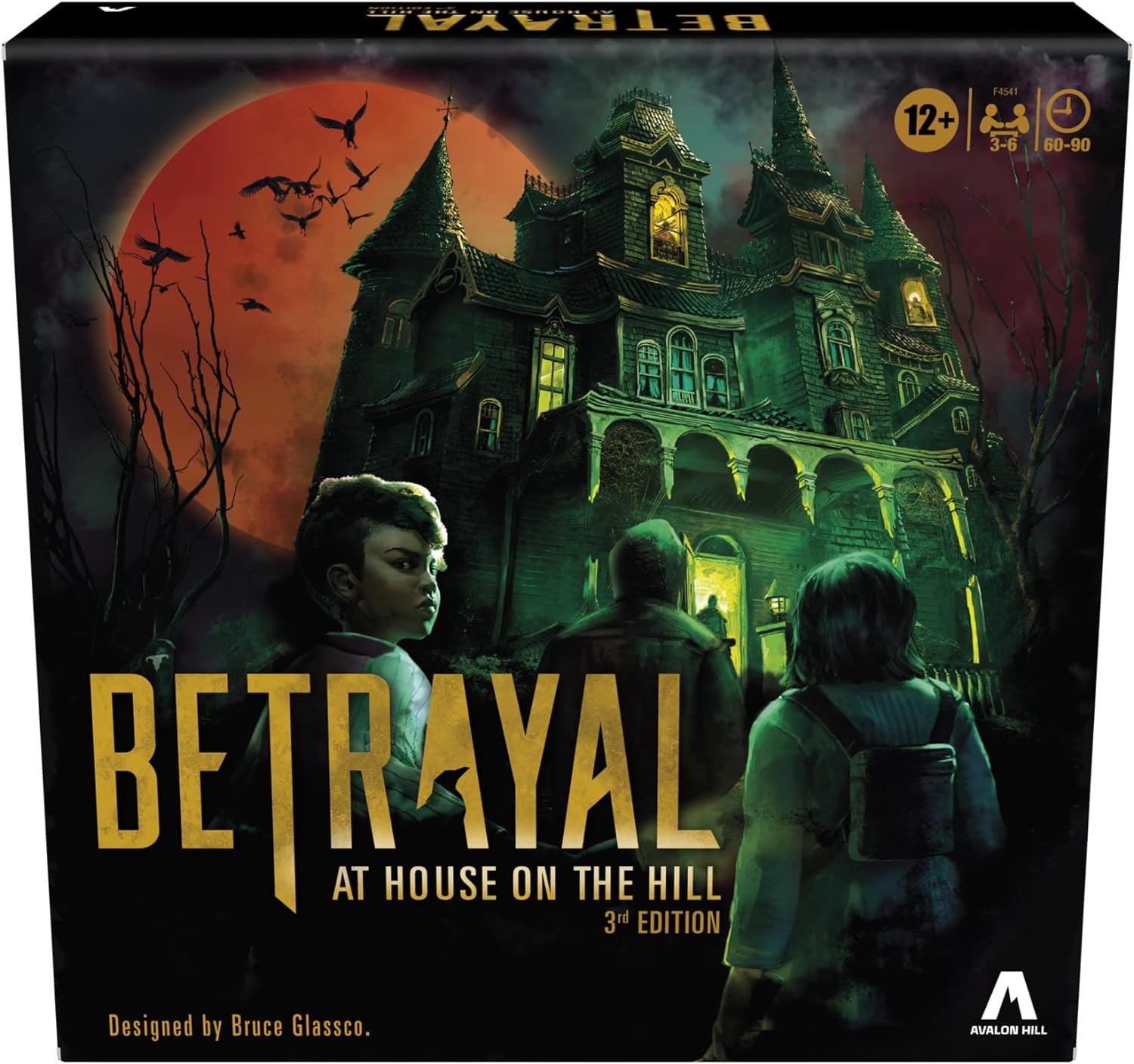



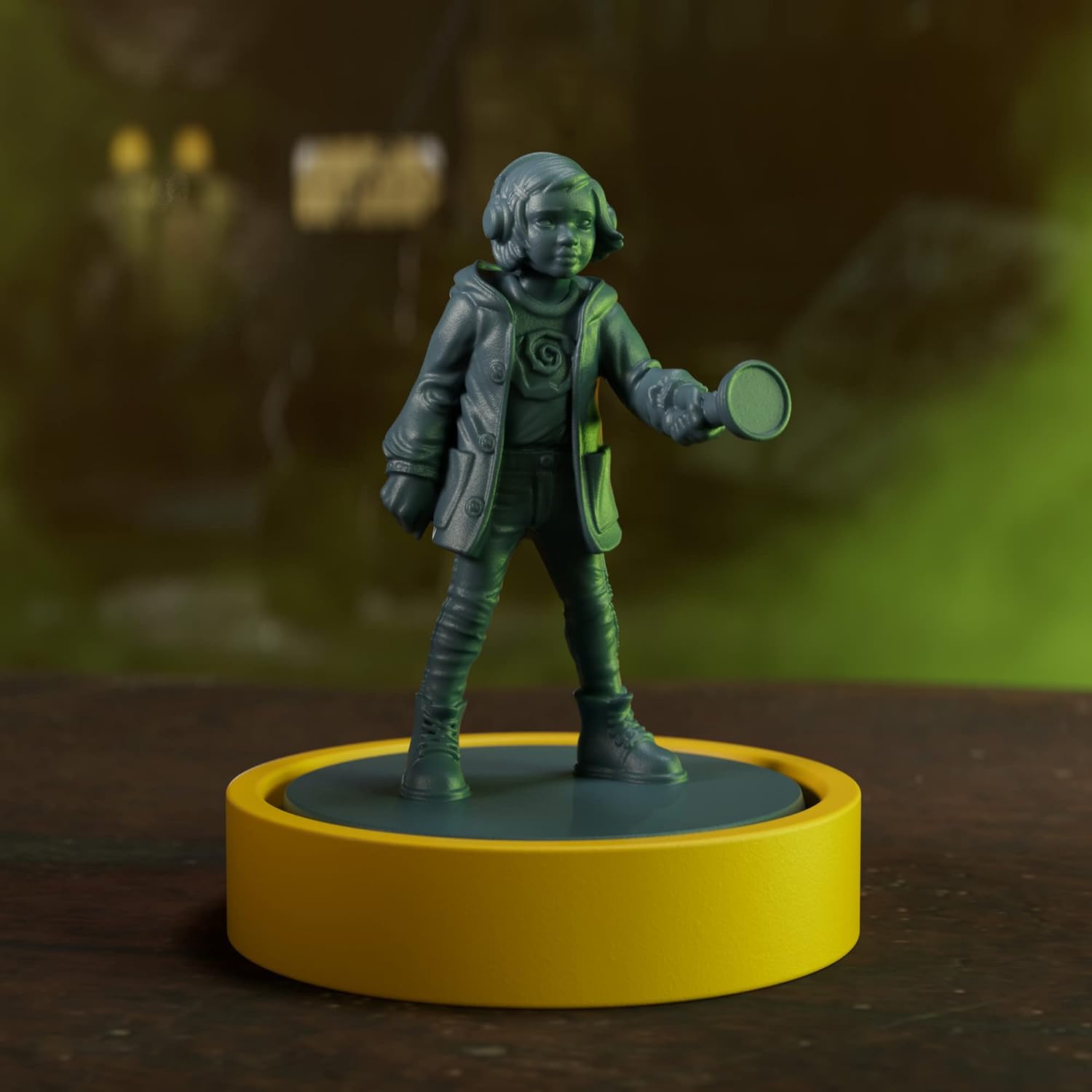



This latest version is said to include streamlined mechanics of the game, making the gameplay experience smoother and the horror more immediate. With a focus on improving the quality of the components, as well as updating and balancing the haunts, the third edition ensures both a physical and thematic facelift.
How Does the Third Edition Reinvigorate the Haunt?
The anticipation for the third edition lies not just in new scares but also in its approach to the classic formula. It’s not just about the new rooms or the number of dice you roll but about the stories that unfold and the memories that will linger long after the game is packed away.
New Scenarios and Unexpected Twists
“Betrayal at House on the Hill 3rd Edition” boasts a collection of new haunts, created by a team of expert storytellers and game designers. Each haunt scenario promises to deliver a new layer of strategy and a narrative that can turn a regular game night into an episode of a suspenseful horror series.
Is the Third Edition Beginner-Friendly?
While catering to fans of the previous versions, the third edition has also been designed with new players in mind. Simplified rule books and a more intuitive game setup provide an inviting starting point for those who are about to enter the haunted mansion for the first time.
The Welcome Mat for Newcomers
The third edition offers a less intimidating entrance hall for first-timers, with clearer guidelines that ease players into the horror of the haunted house. By simplifying complex rules and streamlining the setup, the game minimizes confusion and maximizes the fun from the very beginning of the game.
What Stays the Same in This New Haunted House?
Despite the fresh coat of paint, at its core, the game remains true to the essence that has made “Betrayal at House on the Hill” a mainstay in the world of board games. The blend of cooperative gameplay that abruptly shifts into a frenzied survival against a hidden traitor remains, keeping the unpredictability and excitement alive.
Core Gameplay and Legacy
The elements that players have loved—the exploration phase, the haunt phase, the character development, and the collective storytelling—are all still here. The third edition respects the legacy of the original while promising to add new dimensions to the gameplay.
Does the Third Edition Change the Game for Veterans?
For veterans of “Betrayal,” the third edition offers a nostalgic return with enough changes to feel fresh. Long-time fans will find comfort in the familiar yet be challenged by new haunts and scenarios that they cannot predict.
A Haunted House Reimagined
The excitement for seasoned players lies in the reimagining of a beloved game. With revised mechanics and updated haunts, the third edition is like revisiting a familiar haunted house only to find that the ghosts have learned new ways to haunt.
3rd Edition Brief “How to play” Guide
With updated components, more intuitive rules, and fresh scenarios, the third edition of ‘Betrayal’ ensures a smoother and more varied gameplay experience.
How to Play: Third Edition Brief Guide
- Starting the Game: Introduce new players to the third edition’s character boards and updated starting rooms. Clarify any rule changes from the previous editions.
- Room Tile Revelations: Explore the house with new tiles, each with unique effects and triggers, enhancing the exploration phase of the game.
- Haunt Phase Evolution: Engage with new haunts, carefully designed to balance the gameplay and immerse players in diverse horror narratives.
- Victory Conditions: Learn the revised endgame scenarios, which offer a refined approach to achieving victory as either a hero or a traitor.
Is “Betrayal at House on the Hill 3rd Edition” the Perfect Game for Your Next Game Night?
“Betrayal at House on the Hill” has evolved over the years, yet the core appeal of the game remains unchanged. It’s a journey through the twisted corridors of a haunted house that never reveals its secrets too easily. The third edition stands as a testament to the game’s lasting power—a power that lies in the shared stories, the sudden betrayals, and the screams of both horror and delight.
A Game That Transcends Generations
Whether it’s the first edition that’s found a permanent spot on your shelf or the shiny new third edition that you’re eager to crack open, “Betrayal at House on the Hill” is more than just a game. It’s an experience, a tradition, and for many, a highlight of countless game nights.
With the new third edition, the question is not whether you should play “Betrayal at House on the Hill,” but rather, are you ready to face the horrors within? So gather your friends, set the mood, and open the door to a night filled with storytelling, strategy, and the kind of fun that only comes from a good scare.
How Does the Third Edition Honor Its Roots?
“Betrayal at House on the Hill” has established itself as a fixture in the realm of cooperative board games, with the third edition proudly carrying on its traditions. Here’s how the latest version pays homage to its roots:
Maintaining the Spirit of the Original Game
Despite the enhancements, the third edition preserves the spirit of the original game. From the chilling ambiance to the thrilling narratives, the essence of a shared adventure in a haunted house remains strong.
Consistency Across the Board
The layout of the mansion, the iconic starting rooms, and the fundamental mechanics of the game have been kept consistent. This ensures that even as new elements are introduced, they blend seamlessly with the tried-and-true aspects that have defined the game since its first edition.
Innovating for the Future: What Sets the Third Edition Apart?
While the third edition honors the foundation laid by its predecessors, it also establishes its own identity through innovation.
Refined Gameplay and Enhanced Experience
By taking feedback from years of play, the designers have been able to refine aspects of the game that needed polishing, such as the haunt mechanics and the clarity of special rules.
The Addition of Contemporary Themes
Modern themes and new narratives keep the game relevant and engaging. Whether it’s through updated character backstories or scenarios that resonate with contemporary horror movie tropes, the third edition speaks to a new era of players.
Community and Continuity: Can Fans Still Contribute to the “Betrayal” Experience?
One of the most beloved aspects of “Betrayal at House on the Hill” has been the community’s ability to contribute to the game’s growth. The third edition continues to support this collaborative spirit.
Fan-Made Scenarios and House Rules
The game still welcomes and encourages fan-made scenarios and the adoption of house rules. This practice has allowed for an ever-expanding universe of “Betrayal” that goes beyond what’s in the box.
A Legacy of Collective Storytelling
At its heart, “Betrayal” is a game about stories, and the third edition is a canvas for a new chapter of collective storytelling, where every game night can lead to a unique tale of horror and heroism.
Betrayal at Baldur’s Gate – The Fantasy Horror Twist

How Did Betrayal Enter the World of Baldur’s Gate?
After exploring the haunted halls of the “Betrayal at House on the Hill” editions, it’s worth mentioning the fantastical cousin of the series: “Betrayal at Baldur’s Gate.” This version transports players from the haunted house to the iconic city of Baldur’s Gate, infusing the game with fantasy elements from the Dungeons & Dragons universe.
A Unique Gaming Experience

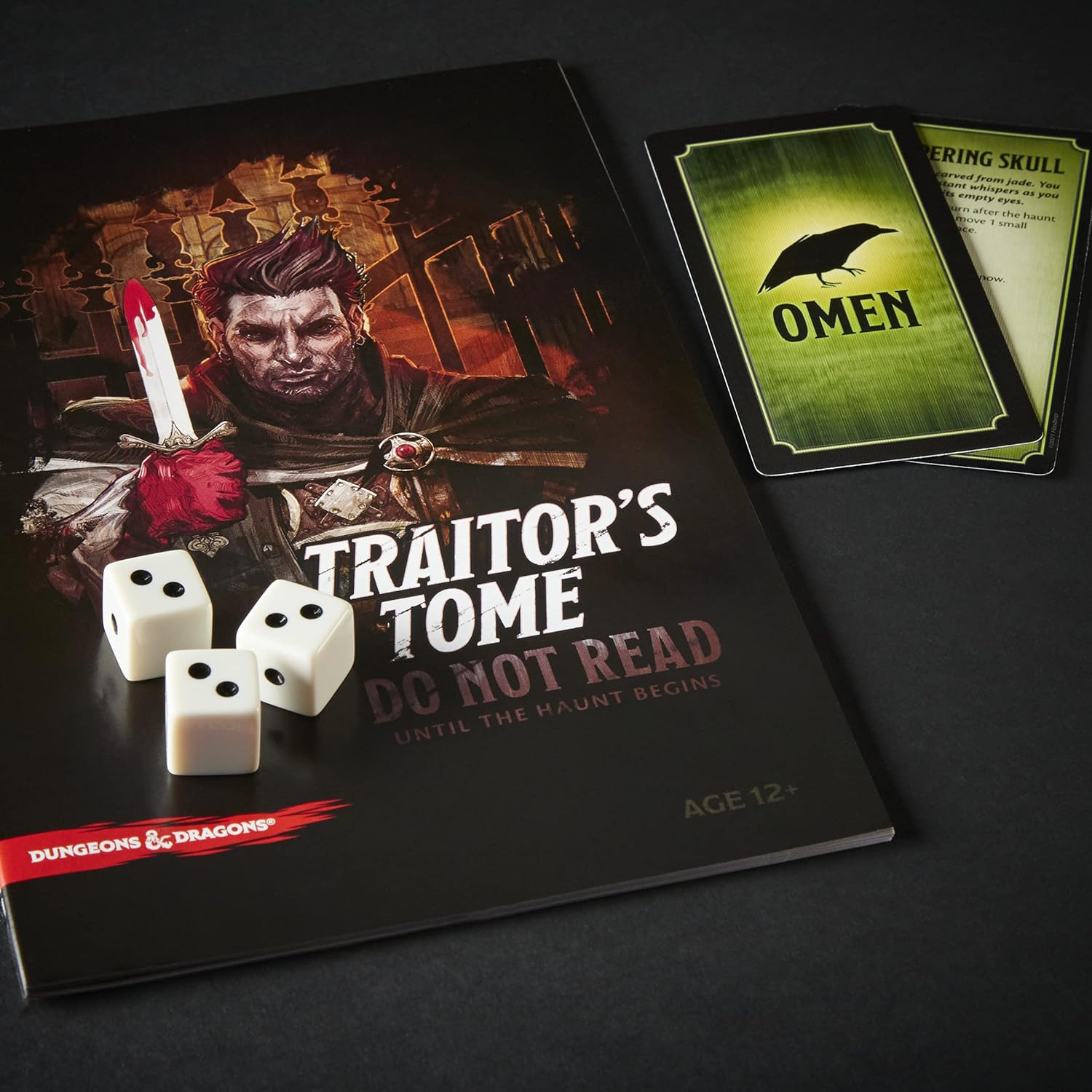





In the shadowy alleys of Baldur’s Gate, “Betrayal at Baldur’s Gate” merges the suspenseful exploration and betrayal of “Betrayal at House on the Hill” with the rich, fantastical world of Dungeons & Dragons (D&D). This fusion creates a unique gaming experience that draws in fans of both franchises with the promise of adventure, mystery, and treachery.
Embracing the Essence of D&D
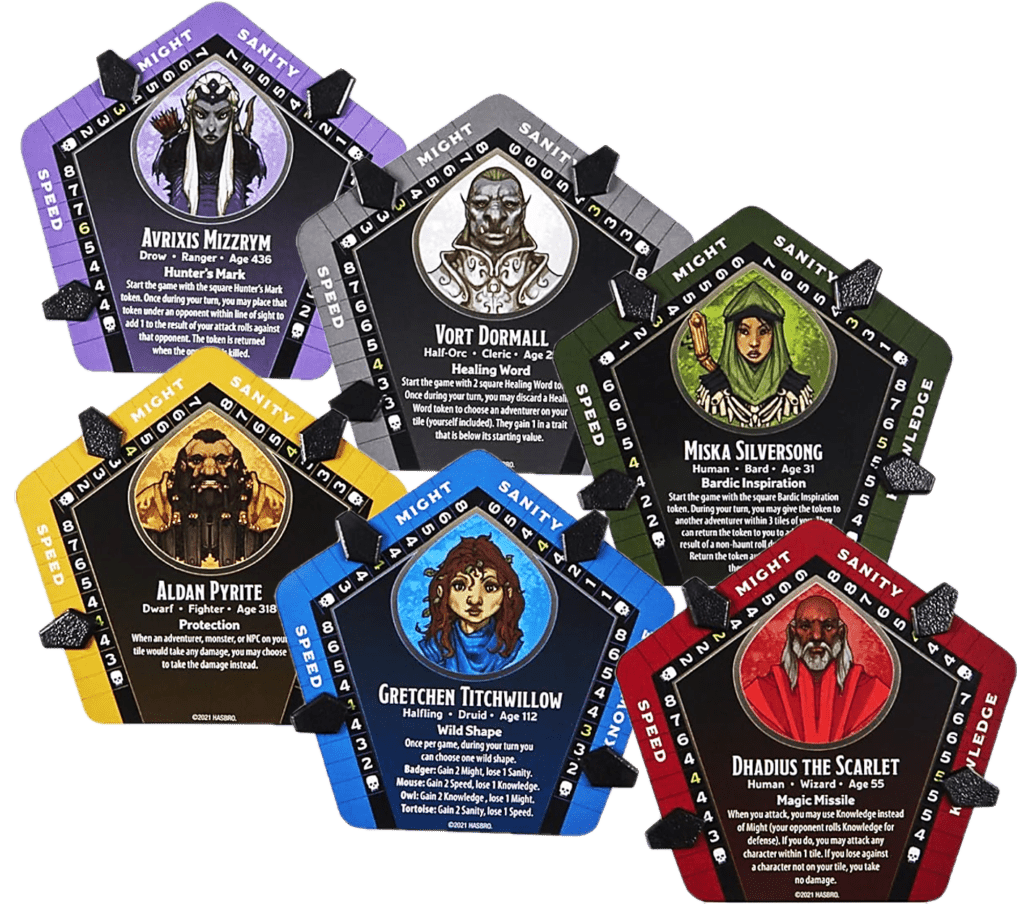
The game harnesses the essence of D&D, bringing its hallmark fantasy elements to the forefront. Players select characters from familiar D&D classes and races, each with special abilities that affect gameplay. The cast includes hardy warriors, cunning rogues, devout clerics, and wise wizards, each bringing a slice of D&D’s character diversity to the board. As players explore the city, they uncover a varied tapestry of scenarios that could only come from the D&D universe, from confronting sinister cults to stopping magical catastrophes.
Thematic Changes and the City of Danger
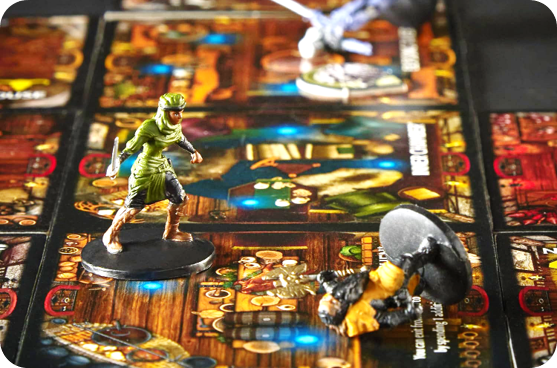
“Baldur’s Gate” is a city teeming with life, danger, and lore, and the game encapsulates this perfectly with its thematic changes. Instead of a haunted mansion, players navigate through a map that expands as they explore iconic locations within the city and its deadly catacombs. The atmosphere is palpable, as each new room tile can reveal a piece of a larger, more complex narrative puzzle inspired by the vast storytelling of D&D campaigns.
The Seamless Integration of Two Worlds
The appeal to fans of both “Betrayal” and D&D lies in the seamless integration of both worlds. The game retains the beloved mechanics of the “Betrayal” series, such as the haunt roll, which now triggers scenarios steeped in D&D mythology. Players may find themselves battling liches, escaping traps, or unmasking hidden traitors among their ranks—all experiences deeply rooted in the D&D tradition.
Cooperative Play and Party Dynamics
Moreover, “Betrayal at Baldur’s Gate” introduces cooperative elements that resonate well with D&D players. While the game eventually splits the group into heroes and the traitor, much like a D&D party, players must work together, combining their characters’ strengths to overcome the challenges they face. This cooperation underscores the essence of D&D, where party dynamics and teamwork are as crucial as the roll of the dice.
A New Type of Adventure
In combining these elements, “Betrayal at Baldur’s Gate” doesn’t just appeal to fans looking for a board game with a D&D theme; it entices players into a new type of adventure. One that respects the lore and complexity of its D&D roots while delivering the thrilling uncertainty and storytelling that fans of the “Betrayal” series have come to cherish. It’s a crossover that feels both familiar and new, a doorway to countless tales of courage, cunning, and betrayal in the city of Baldur’s Gate.
Betrayal At Baldur’s Gate Brief “How to play” Guide
How to Play: Betrayal at Baldur’s Gate Brief Guide
- Setting the Scene: Players choose a D&D character with unique abilities. The game begins in the fabled city of Baldur’s Gate, using the starting tile.
- Exploration with a Twist: As adventurers, players explore the city, drawing room cards that reveal alleys, buildings, and catacombs, each with potential for items, events, or omens.
- The Haunt of Baldur’s Gate: When the haunt is triggered, the game shifts dramatically. One player becomes the traitor, revealing a scenario that intertwines with D&D lore.
- Fantasy Battles and Strategies: Players engage in battles using their character’s special abilities and items found in the city, with victory conditions tailored to the fantasy setting.
Download Betrayal At Baldur’s Gate RULEBOOK
Betrayal Legacy – Weaving a Story Across Generations
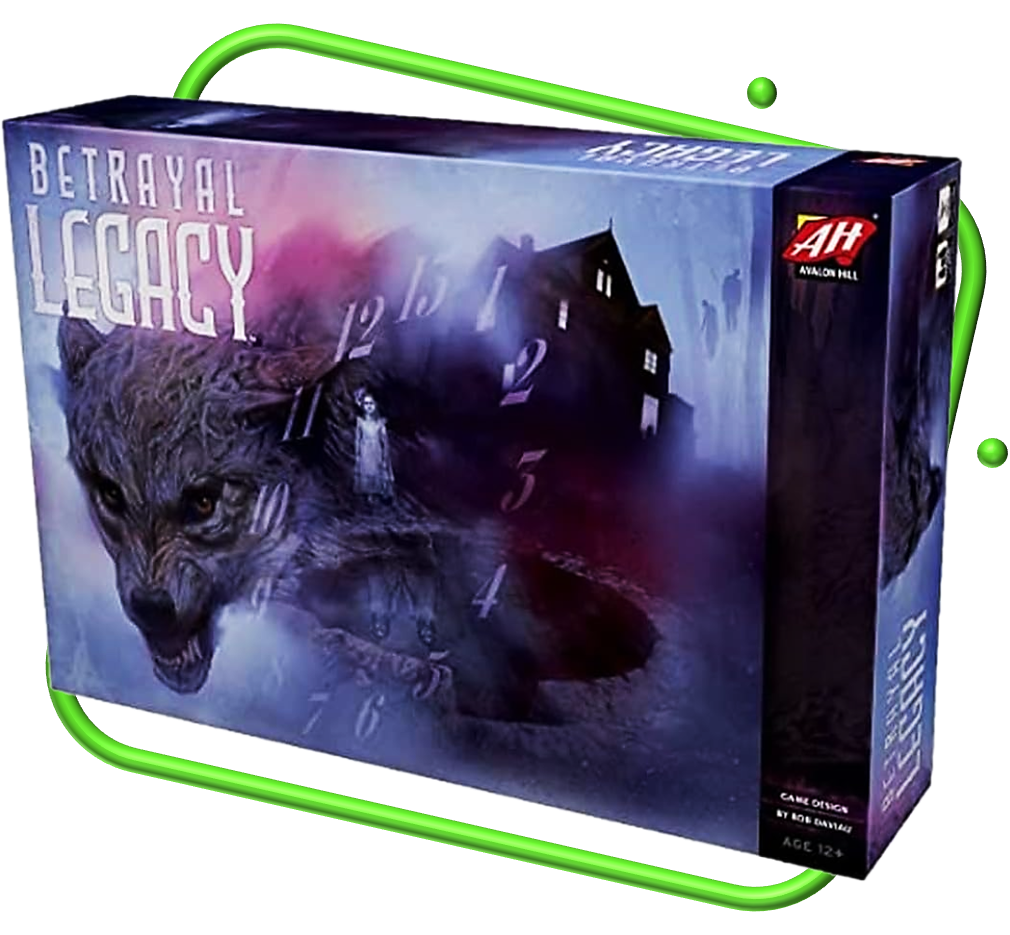
In the shadowy corners of the “Betrayal” series, “Betrayal Legacy” offers a unique twist: a campaign format where the decisions and outcomes of one game affect the next. This game spans generations, building a personalized and evolving narrative.
Crafting a Horror Legacy: An Evolving Journey
The Revolution of Legacy Games
Legacy games have revolutionized tabletop gaming by introducing a narrative that evolves and unfolds over multiple play sessions. These games often include permanent changes to the game components — such as adding stickers, writing on cards, or even tearing them up. It’s a transformative experience that tells a story not just through gameplay but also through the physical game elements themselves.
Introducing “Betrayal Legacy”
“Betrayal Legacy” is Avalon Hill’s foray into this innovative genre, marrying the mechanics of the beloved “Betrayal at House on the Hill” series with a dynamic and enduring storyline. The introduction of “Betrayal Legacy” to the “Betrayal” series adds a layer of depth and customization that stands in stark contrast to the standalone nature of the previous games.
Lasting Consequences and a Haunting Ripple Effect
As players journey through the cursed halls of the house on the hill, their actions have lasting consequences, echoing the chilling ripple effect of a true horror movie — the past forever haunting the present and shaping the future.
The House’s History and Player Impact
“Betrayal Legacy” offers a unique twist: the house’s history itself is developed and chronicled by the players. Each game builds on the last, creating an intricate tapestry of a story that is as unpredictable as it is enthralling.
The Evolution of a Personalized Haunted Mansion
But what truly makes “Betrayal Legacy” stand out is its story development. The game begins at the dawn of the house’s history, taking players through the ages as they control successive generations of their chosen family.
A Generational Saga Within a Board Game
With each playthrough, players not only experience a new chapter in the game’s narrative but also contribute to the overarching mythology of their unique version of the game. Personal victories and tragedies are recorded, and they bear significance as the families evolve, with heroes, villains, and victims all leaving their marks on the cursed residence.
The Role-Playing Narrative Experiment
In essence, “Betrayal Legacy” isn’t just a game; it’s a generational saga wrapped in the trappings of a horror board game. It stands as a testament to creative writing in gaming, a bold narrative experiment that elevates the role-playing elements to new heights.
Crafting a Haunting Legacy
With every session, players aren’t just moving pieces on a board; they’re crafting a haunting legacy that will be remembered long after the final dice roll.
Betrayal Legacy Brief “How to play” Guide
How to Play: Betrayal Legacy Brief Guide
- Beginning the Legacy: Players start their campaign by choosing a family, which they will represent throughout the entire legacy.
- The Prologue: Introduce players to the game mechanics with a preliminary haunt that sets the stage for the overarching narrative.
- Campaign Progression: Each session represents a chapter in the story, with the house evolving over time. Stickers are placed on cards and the board, and components are modified or even destroyed, based on player actions.
- Haunt Legacy: Similar to other editions, the haunt begins when certain conditions are met. However, in “Betrayal Legacy,” each haunt contributes to an ongoing story, with results that carry over to future games.
- The Chronicle: As the campaign unfolds, players document their saga in the “Bleak Journal,” a book that guides the narrative and introduces new rules and components in each chapter.
Download Betrayal Legacy RULEBOOK
New Horrors Await: “Betrayal: The Werewolf’s Journey”
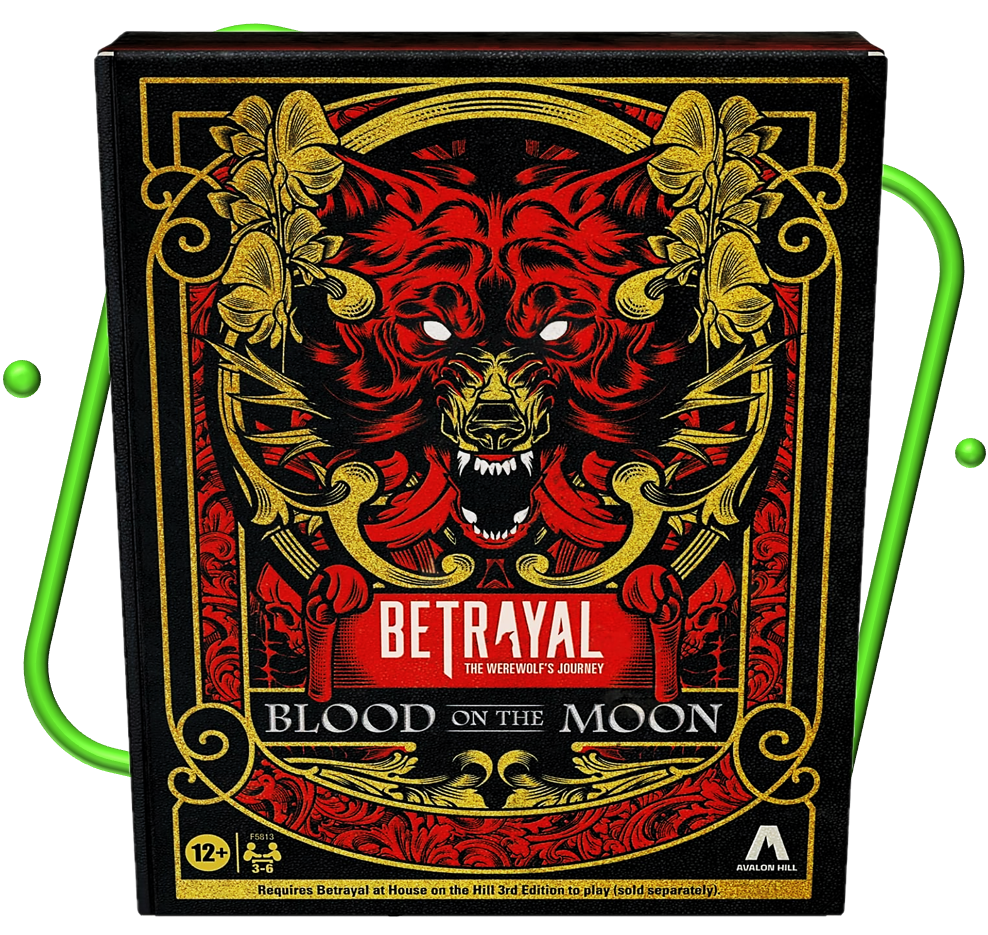
Unleashing the Beast: An Introduction to “The Werewolf’s Journey”
“Betrayal: The Werewolf’s Journey” introduces a thrilling new twist to the beloved “Betrayal” series. In this edition, players navigate a chilling narrative centered around the lore of werewolves, adding a layer of supernatural intrigue and primal fear to the already tense atmosphere of the game.
Thematic Depth: Embracing the Werewolf Lore
The game delves deep into werewolf mythology, bringing to life the classic elements of the lore. Players will encounter scenarios influenced by full moons, the haunting duality of human and wolf forms, and the ominous presence of silver. This thematic richness adds a layer of depth to the storytelling, immersing players in a world where every choice could trigger the beast within.
Artwork and Atmosphere
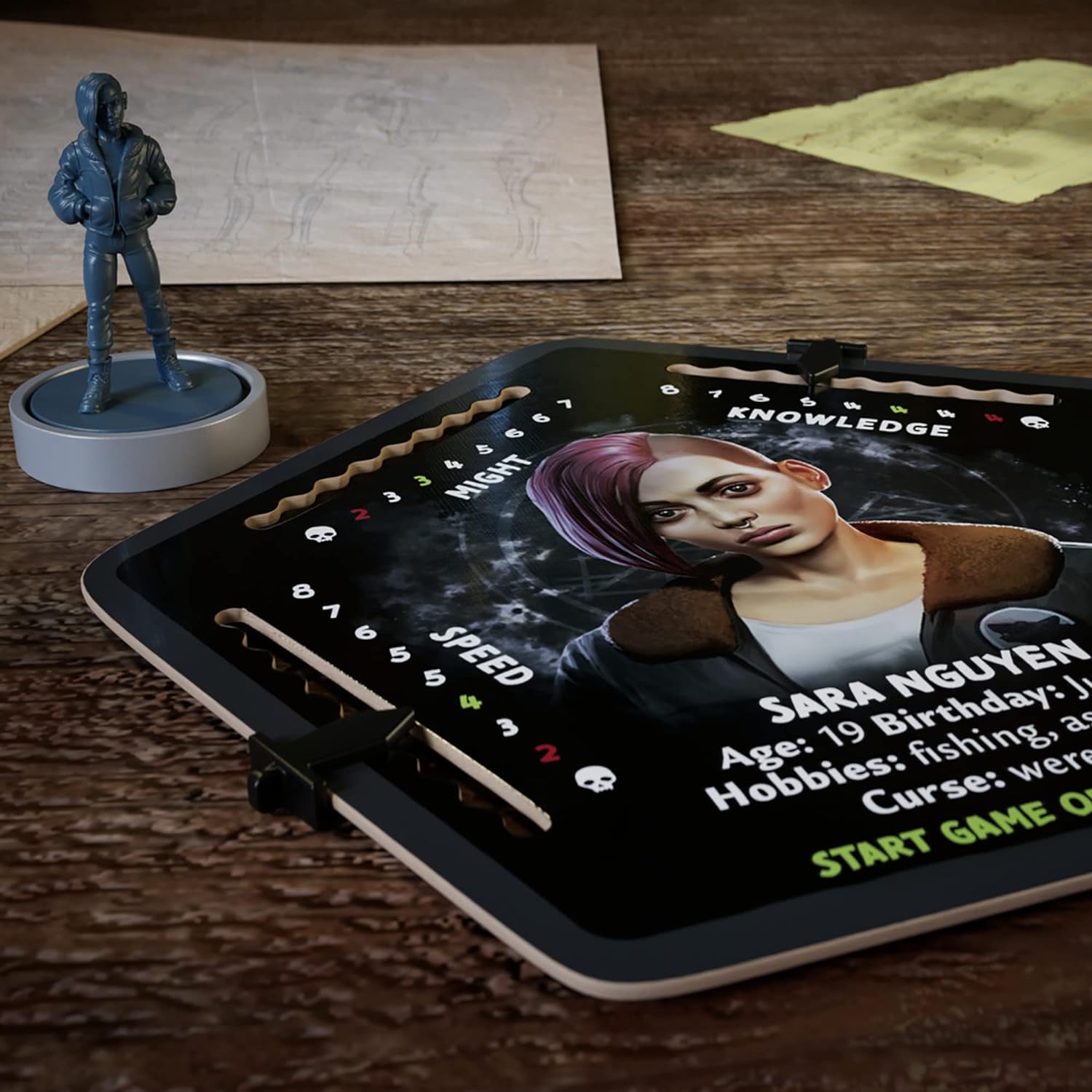
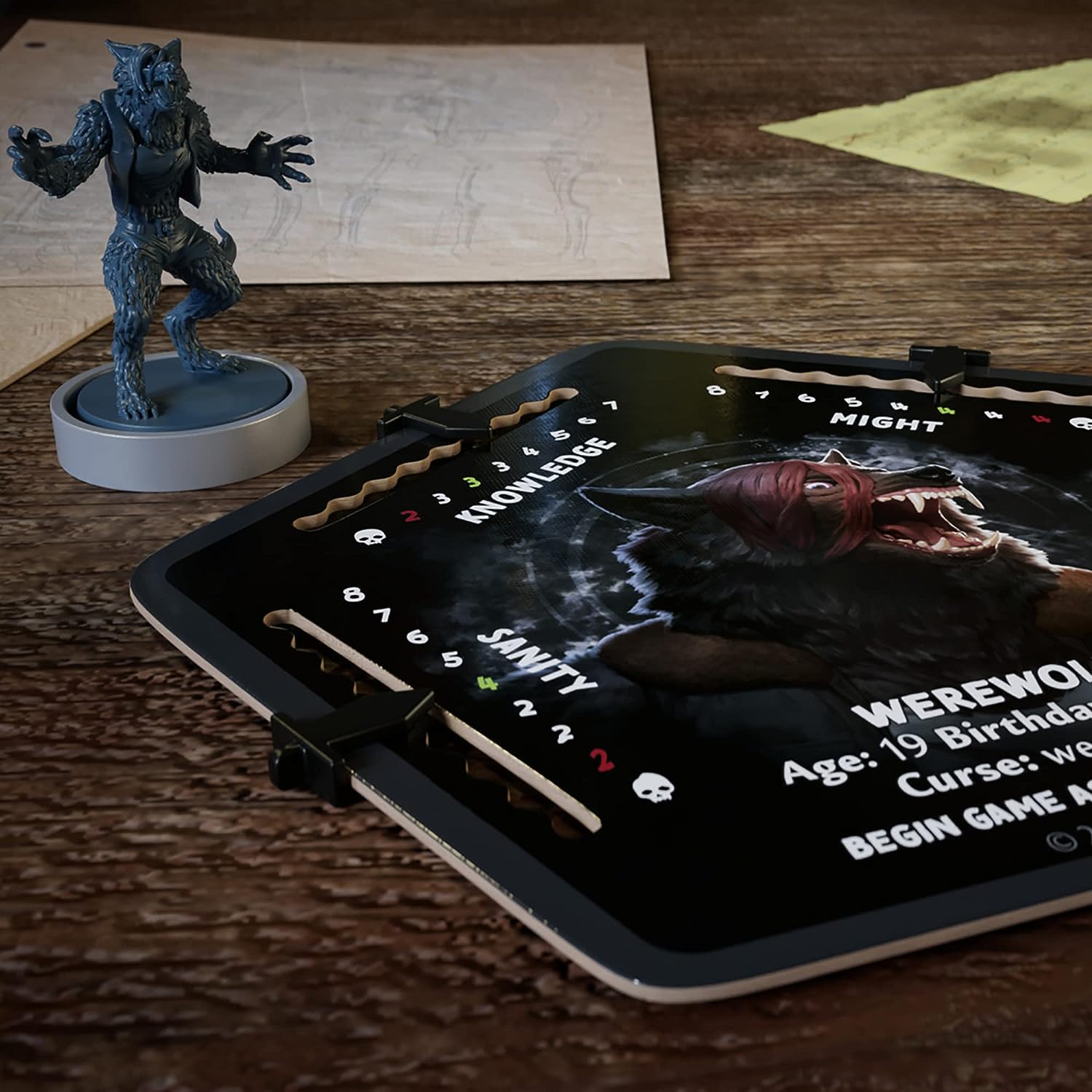
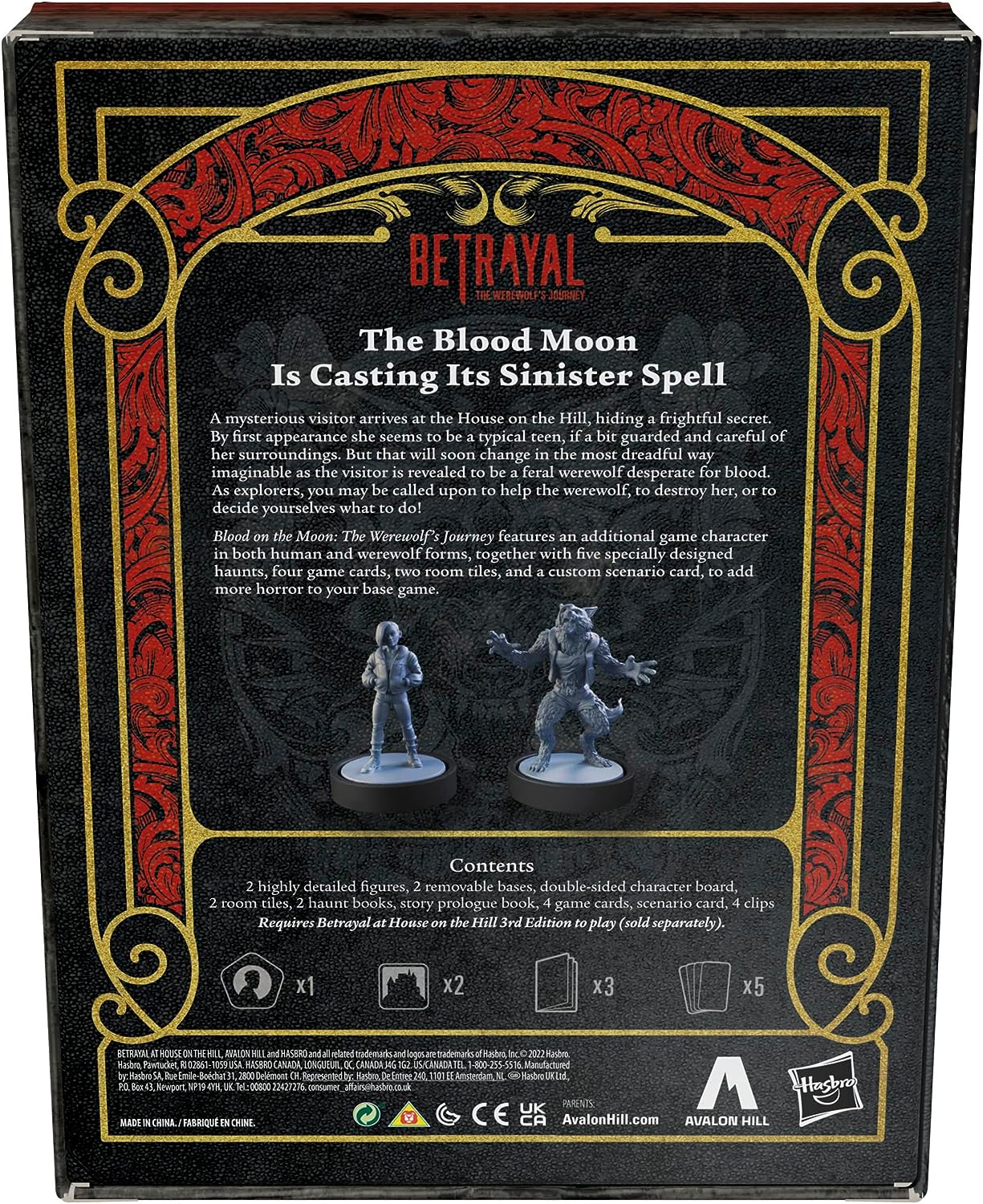
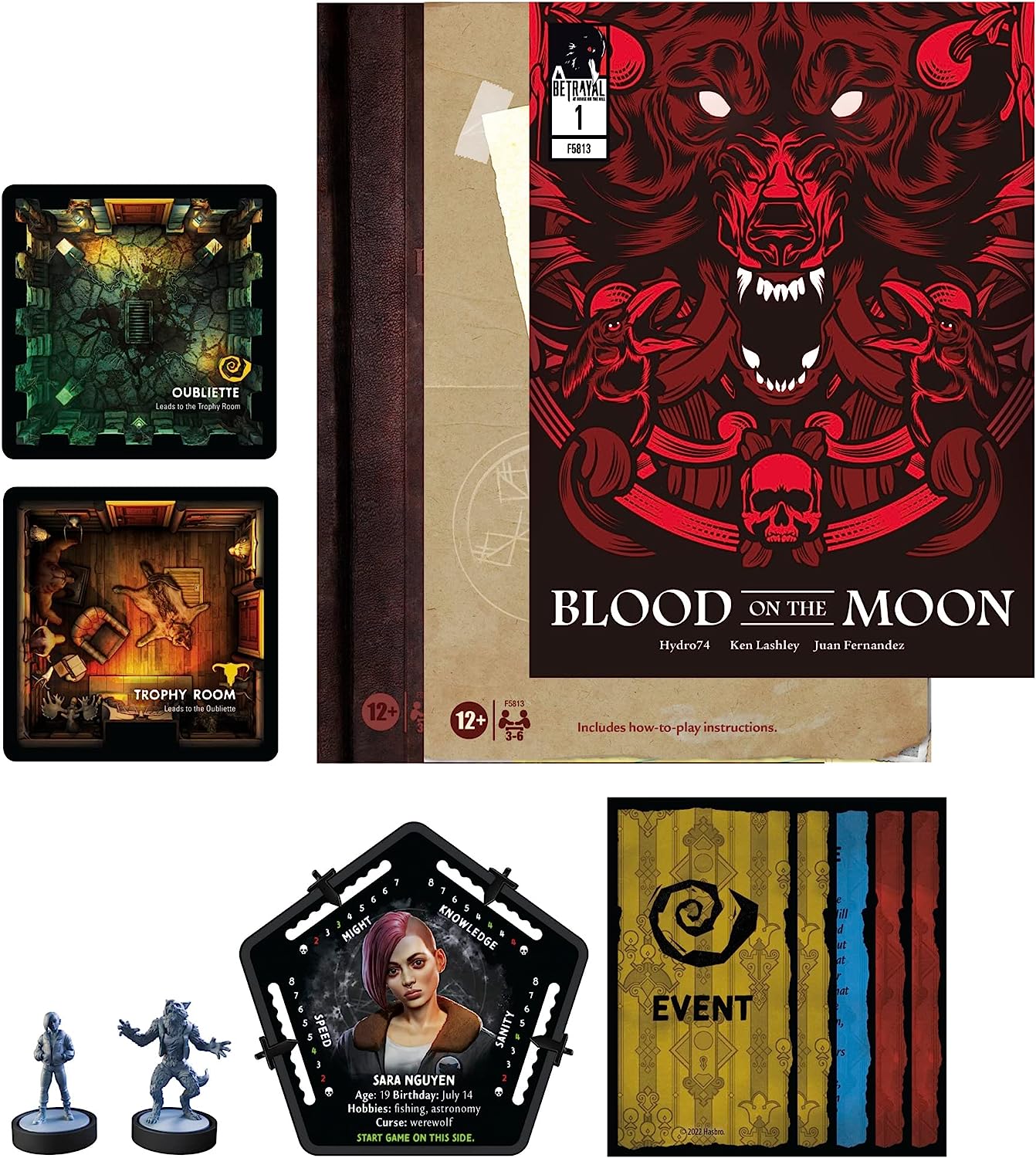
The artwork and design of “The Werewolf’s Journey” are meticulously crafted to enhance the eerie atmosphere. From the detailed game pieces to the hauntingly illustrated cards and board, every aspect is designed to transport players into the dark and brooding world of the werewolf. The visuals not only complement the gameplay but also enrich the overall experience, making each session a journey into a gothic horror tale.
Role Dynamics and New Characters
New characters and roles specific to “The Werewolf’s Journey” bring unique abilities and challenges, influencing player interactions and the unfolding narrative. These roles deepen the strategy and allow for diverse play styles, catering to different player preferences.
Scenario Variations and Replayability
The game offers a wide array of scenarios, each rooted in werewolf mythology. These scenarios not only increase the game’s replayability but also ensure that each playthrough offers a novel experience, full of unexpected twists and turns.
The Experience for New and Veteran Players
For newcomers, “The Werewolf’s Journey” serves as an accessible entry point into the “Betrayal” universe, while veterans will appreciate the fresh challenges and thematic innovations that set this edition apart from its predecessors.
The Call of the Wild
“Betrayal: The Werewolf’s Journey” stands as a formidable addition to the “Betrayal” series and the horror board game genre. It captures the essence of the werewolf legend, transforming it into an immersive, narrative-driven board game experience that will haunt and delight players for years to come.
Betrayal “The Werewolf’s Journey” Brief “How to play” Guide
How to Play: Betrayal “The Werewolf’s Journey” Brief Guide
- Beginning the Nightmare: The game starts with a focus on the werewolf’s den, setting the stage for a harrowing adventure.
- Hunting and Hiding: New items, events, and omens are centered around the werewolf theme, adding suspense and strategic depth.
- The Curse Unleashed: The haunt phase introduces werewolf-specific scenarios, creating a dynamic and unpredictable game flow.
- A Fight for Survival: Players, as villagers or werewolves, use resources and wit to either spread or cure the curse, leading to intense gameplay.
Download The Werewolf’s Journey
Final Thoughts: “Betrayal at House on the Hill” Across the Editions
From the first edition’s groundbreaking introduction to the horror board game genre to the third edition’s refined embrace of modern gaming expectations, “Betrayal at House on the Hill” remains a testament to the power of imagination and the joy of playing together.
The Everlasting Appeal of “Betrayal”
The game’s ability to bring people together, to have them co-create a horror story, and then pit them against one another in a twist of fate is a formula that has withstood the test of time.
The Ideal Game for Diverse Players
Whether you’re a horror game aficionado, a lover of role-playing games, or just looking for the perfect game to spice up your game night, “Betrayal at House on the Hill” in any of its editions offers a thrilling experience.
A Game That Grows With You
As players change and grow, so does “Betrayal.” With each edition, and every new haunt, the game morphs, providing a fresh experience that keeps players coming back. It’s a game that can be a different adventure every time it’s played, making it a perennial favorite.
Wrapping Up the Haunt: A Hill Review
We’ve walked through the dusty corridors, ascended the creaky stairs, and survived the horrors of all three editions of “Betrayal at House on the Hill.” This game has proved that it’s not just about the mechanics or the components—it’s about the memories created and the stories told.
Whether you’re considering picking up the game for the first time or you’re a seasoned explorer of the haunted mansion, each edition of “Betrayal at House on the Hill” offers something unique. From the unpredictable excitement of the first edition to the polished and expansive second edition, the third edition, all the way to the modern and accessible Legacy and Baldur’s Gate, there is always something new to discover.
So, as the door to the mansion swings shut behind you, the only question that remains is: when will you return to the House on the Hill?






